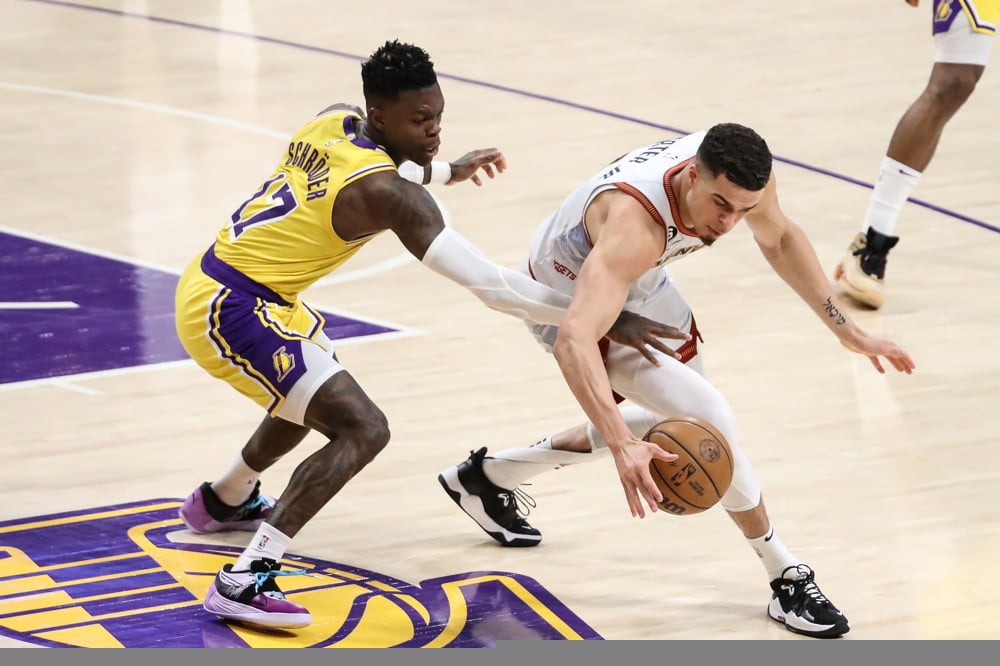Fashion
Fashion Briefing: Fast-growing and newly profitable, Wolf & Badger is fashion e-commerce’s exception to the rule

This week, an in-depth look at the business model of fashion marketplace Wolf & Badger. Plus, has fashion reached peak tennis?
As the longtime leaders of fashion e-commerce fall, the unique business model of the newly profitable Wolf & Badger stands to shape the playbook for the industry’s next era.
Aiming to serve as the ultimate business partner of emerging independent brands while also meeting the Amazon-set standards of today’s fashion consumer, Wolf & Badger’s founders have established unique processes that have both fulfilled these goals and padded their wallets.
The 15-year-old company reached profitability this year and is on track to hit, before “substantially” exceeding, $100 million in gross merchandise value for the first time, according to co-founder and creative director Henry Graham. It’s pacing to reach $53 million in net revenue, a nice boost over the $43 million earned in 2023. And on the Financial Times’ list of the 1,000 fastest-growing European companies, released in February, the London-based business ranked No. 395. The company receives 300-400 inbound inquiries from wannabe brand partners every month. And its Trustpilot score, which its executives boast in their email signatures, is 4.6 based on 42,000 customer reviews. Wolf & Badger has raised a total of $15 million since its inception.
“We’re trying to create an old-school boutique in contemporary times,” Graham said. “We don’t expect anyone would buy everything from us, but we want to be the [go-to] resource for unique, limited-edition, high-quality, artisanal and sustainable pieces.”
Certified B Corp in 2021, Wolf & Badger’s focus on limited-run styles and promise of ethical production are working in its favor, according to Graham. “More people are now deciding, ‘I’m going to think a bit more about where things come from and what their story is,’” he said. “And buying higher quality items less often is catching on.”
On average, the 1,800 brands Wolf & Badger sells do $250,000-$1 million in total annual sales, and Wolf & Badger is usually their top stockist. However, some brands are earning over $1 million in incremental revenue through the marketplace alone. Around 300,000 products are currently for sale on the site.
Sofia Cuccia, founder of the 8-year-old NYC-based jewelry brand SCCollection, which sells pieces for $40-$270, said that since partnering with Wolf & Badger less than a year ago, her orders have doubled, her social followers and customers have “multiplied,” and she’s landed new retail partners that discovered her brand through the site. Fifty percent of SCCollection sales now come through the company, and she expects the brand’s Wolf & Badger sales will hit $100,000 this year — they’ve consistently grown month-over-month.
Founders of Wolf & Badger’s other brand partners were just as eager to sing its praises. NYC-based Jessie Zhao, designer and founder of her namesake swimwear and accessories brand, said she’s seen a sales increase of 5,400% from the brand’s first month on Wolf & Badger, in April 2020, to June 2024. She signed on with the marketplace after her brand’s wholesale accounts canceled their orders during the pandemic, she said. Today, Jessie Zhao also sells at Macy’s, though the styles available at Wolf & Badger are more “fashion-forward,” Zhao said.
For his part, Robert Ingemarsson, founder of the London-based menswear brand Ingmarson, said that “no other marketplace comes close” to delivering the sales he achieves through Wolf & Badger. The retailer is Ingemarsson’s only stockist allowing him to offer his full knitwear collection while selling all styles on-demand, he said. Ingemarsson has seen year-over-year sales growth through Wolf & Badger, where he sells in its London store and on its website. The brand is set to do over £30,000, or $32,100, in total sales this year.
For $375 per month plus an undisclosed commission on sales, Wolf & Badger provides and constantly optimizes logistics and marketing services that its partner brands rely on to sell outside of their home market. The company is registered for sales tax in every U.S. state, plus it has sorted through customs and duties requirements across global markets. Free shipping and returns are provided to its customers, who are largely based in the U.S. (46%), the U.K. (40%), Western Europe, Australia and the Middle East. Wolf & Badger operates three stores, in London, NYC and L.A., where it hosts events connecting partner brands with its customers. E-commerce drives 98% of the business.
Rosanna Corfe, founder of her namesake home goods brand, is among the brands that have hosted events at a Wolf & Badger store. They’ve included two pop-ups and two live painting classes at the London location.
“We are doing so much behind the scenes that is just messy, difficult and fiddly,” Graham said. “Because of our margins, we don’t make that much money [on each sale]. And any free cash flow is reinvested into the business.” Moves such as entering new markets, opening new stores and buying into new e-commerce technologies are based on the question of, “What would our brands do today if they were not limited on resources?” he said. The Wolf & Badger team is currently made up of 120 people, including 20 in engineering and 20 in brand marketing. Founders and brothers Henry and George Graham have backgrounds in retail real estate and strategy consulting, respectively.
Cuccia said her original motivation to sell through Wolf & Badger was its good reputation and its store locations, which overlap with SCCollection’s biggest markets — her brand is currently sold in all three stores. In the months since, she said, she’s appreciated Wolf & Badger’s marketing tips provided in regular feedback reports, the sense of community it offers, its effective ad targeting and its differentiated customer base. The brand awareness it facilitates is also a big plus, she said.
“Wolf & Badger is changing the way small businesses are merged into mainstream retail,” she said. “My [other retail partners] are wholesale accounts, so they often remove the face, the story and the brand behind the pieces — they don’t promote the brand in the same way.”
Agnieszka Zięba-Maruszczak, founder of the womenswear brand Aggi, which has sold at Wolf & Badger since April 2020, also commented on the next-level “way brands are taken care of” by the retailer. After exclusively selling in Poland for 20 years, largely to local celebrities for special occasions, Zięba-Maruszczak saw the opportunity to expand internationally through the marketplace, which has a comparable target customer. The ability to maintain control of her brand’s product selection, prices and images helped seal the deal. And Wolf & Badger’s “young and energetic team” and “exceptional customer service” have kept the relationship strong.
According to Graham, Wolf & Badger largely focuses its marketing efforts on regions where it has stores, which also work wonders for customer acquisition — L.A. houses the company’s largest U.S. customer base. A majority of its ad budget goes to Google and Meta. Recently granting Facebook and Instagram access to the company’s full product catalog, rather than a company-curated edit, has resulted in more personalized product-carousel ads that have boosted ROI, Graham said.
Emailed edits of products and partnerships with tastemakers have also proven effective. Wolf & Badger’s influencer strategy focuses on authentic fans of the brand, rather than “girls in bikinis,” Graham said. To date, that’s included a chef who showed off the retailer’s home products, for example. Zhang said her brand’s current best-seller, a reversible swimsuit, gained traction through a Wolf & Badger influencer collaboration.
During the holiday shopping season, the company also invests in out-of-home and TV ads featuring its brands and their “makers” and highlighting its core values.
Wolfandbadger.com currently attracts 4 million visitors a month, and the company is approaching 1 million active customers. While womenswear dominates sales — especially dresses, which drive 30% of the business — menswear, homeware and jewelry are “substantial” categories, Graham said. He also noted that the company has a high repeat customer rate, with “a lot of revenue” coming from “super customers” who spend thousands of dollars every year.
Graham said the customer experience the company offers on the site rivals that of leading retailers. For example, registered customers see a unique homepage based on their browsing history, and personalized product recommendations are served up across pages. The company is currently working to improve its online fit and sizing tools.
“No matter how many people we hire in tech, our roadmap is always a backlog of things we wanted to do two years ago,” he said. “We don’t just want to keep up — we want to get ahead.”
He added, “We compare ourselves to the Revolves, Ssenses and Net-a-Porters of the world, and Etsy has a similar ethos. … We’re growing, but we’re not small.”
Gucci launches a tennis collection, just in time for Wimbledon
On Tuesday, Gucci became the latest fashion brand to roll out a tennis collection. With Wimbledon kicking off on Monday, more brands are set to tap into the excitement surrounding the sport. But is there room?
According to Kristen Classi-Zummo, apparel industry expert at Circana, the answer is yes. Sales of men’s and women’s tennis apparel increased 9% year-over-year in the first quarter of 2024, she said, citing Circana retailer tracking data.
“This category continues to grow because the styles and silhouettes are fashionable and multifunctional,” she said. “Tennis apparel, including tennis skirts, polos and knit sweaters, work so well both on and off the court, [reflecting] the new in-between way we’re dressing now.”
The widespread adoption of tennis apparel for everyday wear presents an opportunity for diverse brands to offer their own takes on popular tennis styles, she said. “For heritage activewear brands, the focus should primarily be on function and performance,” she said. “However, there’s opportunity to innovate through patterns and colors while maintaining the technical aspects needed for the sport. Taking this approach will allow them to stay true to their roots while appealing to those looking for this just as a trend.”
Inside Glossy’s coverage
Sports betting is a big opportunity for luxury brands — with big risks









